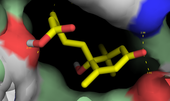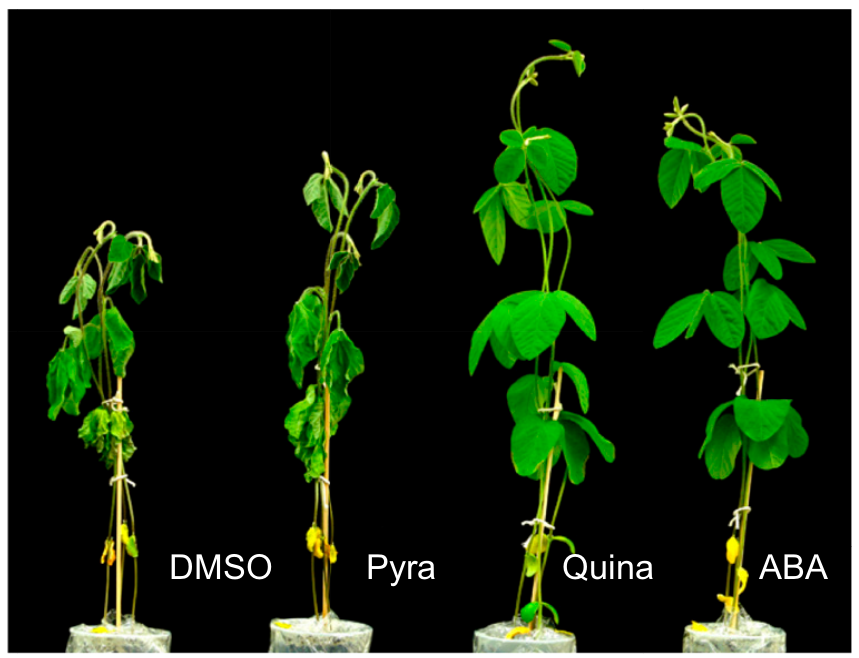In my graduate studies I was fortunate to be in the right place at the right time. At UC Riverside doing my thesis in the lab of Sean Cutler (quoted below) many advances were made regarding the discovery of how the plant stress hormone (shown above as a 2D chemical structure) Abscisic Acid (ABA) was perceived by the long sought after "drought receptor". Well more accurately it was a family of drough receptors [1].
"Andrew joined UCR as a Ph.D. student and IGERT fellow in the fall of 2007. Andrew's thesis work currently has two aspects. On the ABA signal transduction project, he has conducted screens for new compounds that interact with different members of a new family of candidate ABA receptor proteins (the PYR/PYLs). These new small molecules will be used to dissect the roles of the various family members."

Back then we weren't smoking cigars every day, rather it was a special occasion to celebrate our distribution of the diverse chemical library known as LATCA to Europe as well as celebrating a welcome addition to Sean's family.
"Study results appear April 30 in Science Express and in the May 22 issue of Science magazine. The Science paper is accompanied by a patent application with IGERT trainee Andrew Defries as a co-inventor. Defries, an expert in the automation of screening methods, developed methods for rapidly identifying new synthetic chemicals that activate the ABA receptors described in the Science manuscript. Defries’ ground breaking work, which involved hundreds of thousands of chemical assays that he conducted in a period of weeks, sets the stage for industrial scale chemical screens for new modulators of plant stress physiology and water use."
This impactful Science publication sent shockwaves through the community of plant biology located in full below [1]. The details and origin of the ABA recetor(s) had been hotly contested with many "false starts" that were later retracted for lack of scientific integrity (cite).
For those laypeople who are reading now, please check out this read by clicking here or the image below.

For those seeking the detailed current state of affairs. Feel free to brew some coffee and dive into a recent update published in Science by clicking here or the image below.


The synthetic ligand pyrabactin shown above was useful to discover the family of ABA receptors but did not induce dormancy in vegatitive tissues.
Later, an advance was made in the Cutler lab to discover what was coined as "quinabactin" which was able to induce vegetative water use efficiency in Arabidopsis and Soybean [2].
You can clearly see in this image, taken from [2] that the treated plant is doing well under water deprivation when compared to the endogenous plant stress hormone ABA, pyrabactin and vehicle alone (DMSO).

References
[1]: The pyrabactin paper
[2]: The quinabactin paper




